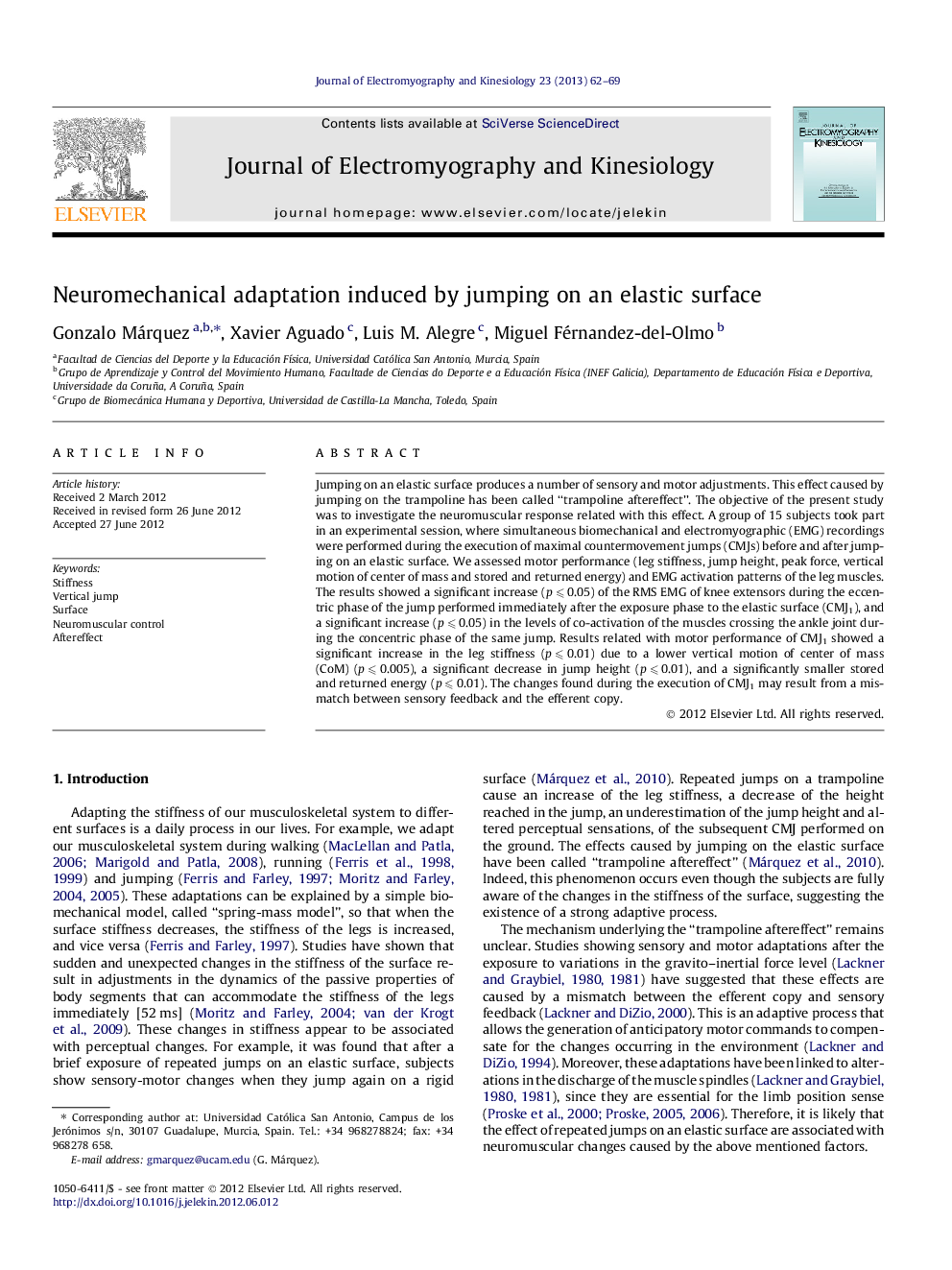| Article ID | Journal | Published Year | Pages | File Type |
|---|---|---|---|---|
| 6210417 | Journal of Electromyography and Kinesiology | 2013 | 8 Pages |
Jumping on an elastic surface produces a number of sensory and motor adjustments. This effect caused by jumping on the trampoline has been called “trampoline aftereffect”. The objective of the present study was to investigate the neuromuscular response related with this effect. A group of 15 subjects took part in an experimental session, where simultaneous biomechanical and electromyographic (EMG) recordings were performed during the execution of maximal countermovement jumps (CMJs) before and after jumping on an elastic surface. We assessed motor performance (leg stiffness, jump height, peak force, vertical motion of center of mass and stored and returned energy) and EMG activation patterns of the leg muscles. The results showed a significant increase (p ⩽ 0.05) of the RMS EMG of knee extensors during the eccentric phase of the jump performed immediately after the exposure phase to the elastic surface (CMJ1), and a significant increase (p ⩽ 0.05) in the levels of co-activation of the muscles crossing the ankle joint during the concentric phase of the same jump. Results related with motor performance of CMJ1 showed a significant increase in the leg stiffness (p ⩽ 0.01) due to a lower vertical motion of center of mass (CoM) (p ⩽ 0.005), a significant decrease in jump height (p ⩽ 0.01), and a significantly smaller stored and returned energy (p ⩽ 0.01). The changes found during the execution of CMJ1 may result from a mismatch between sensory feedback and the efferent copy.
